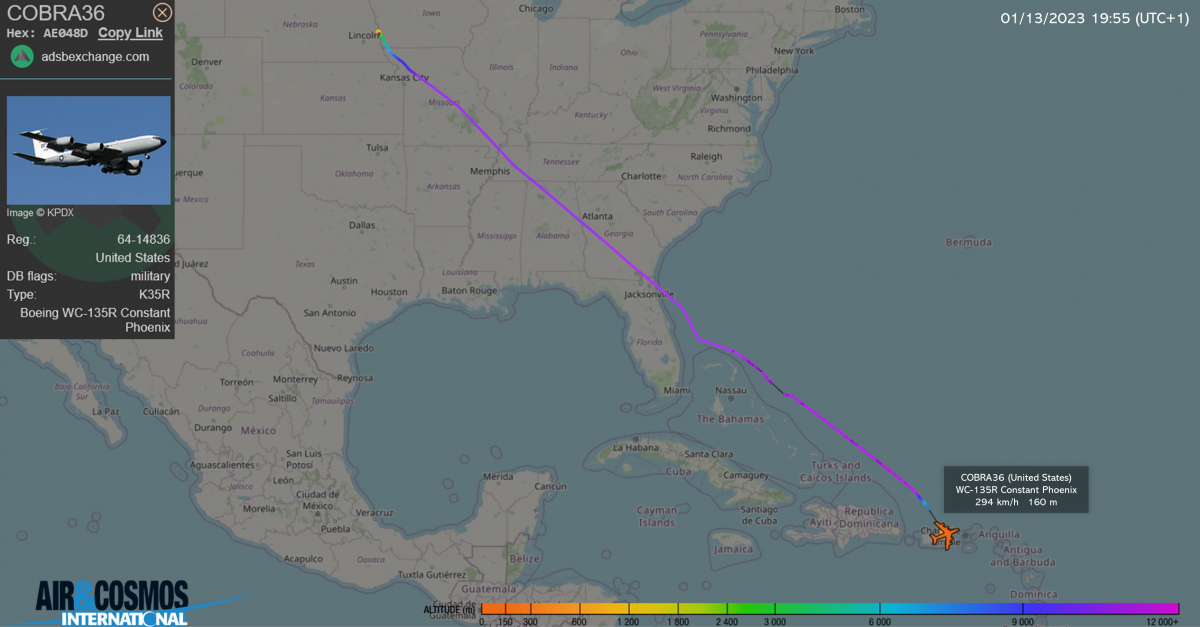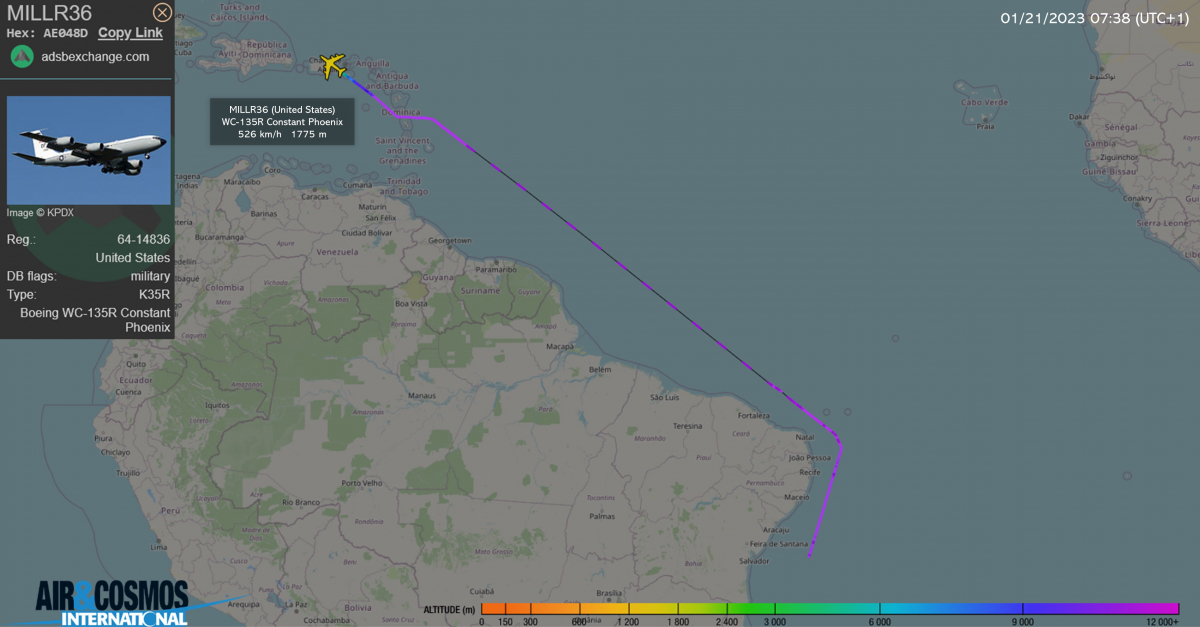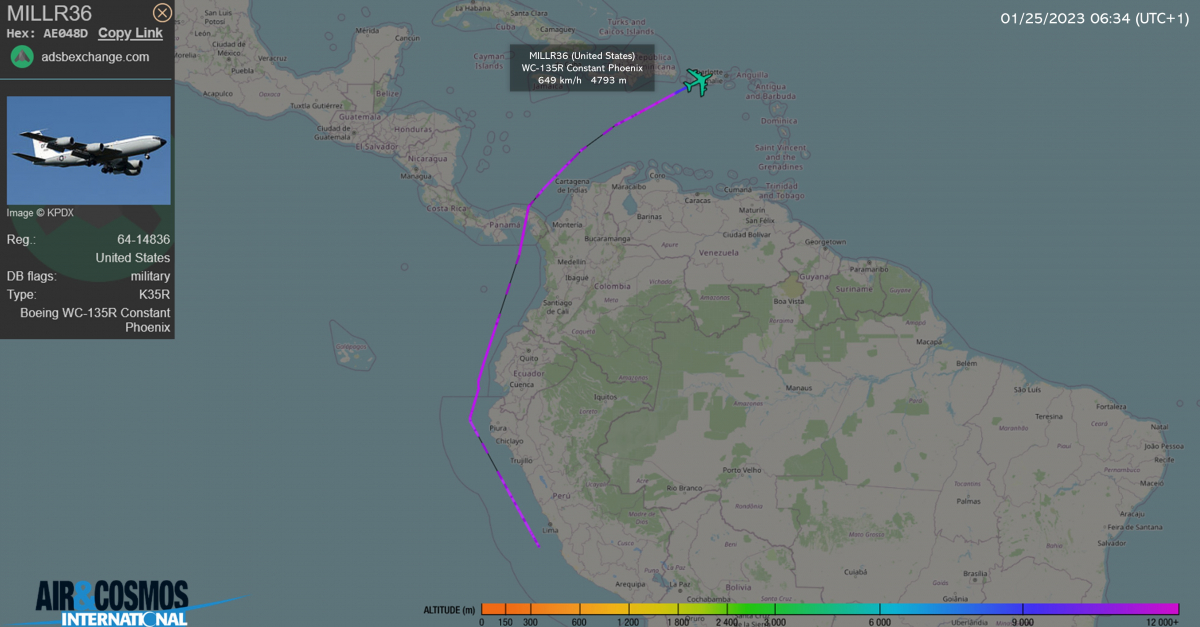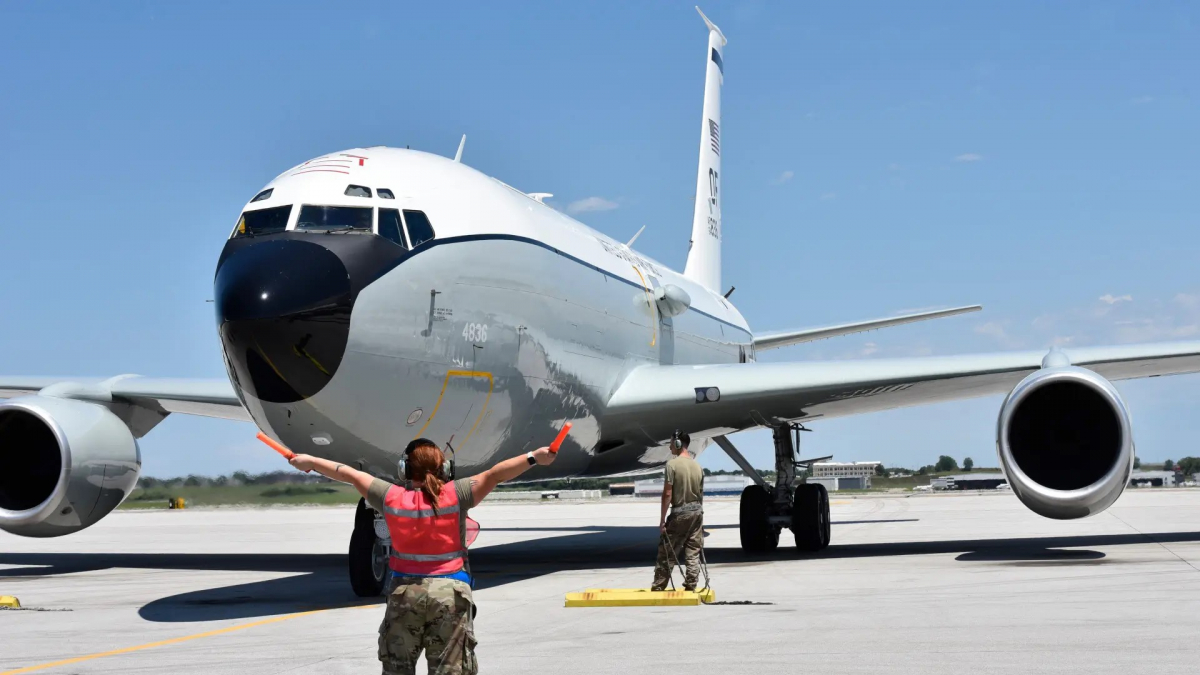The first example of the new version of the Constant Phoenix is currently deployed from the island of Puerto Rico. This WC-135R, accompanied by a tanker, makes very long flights along the national airspace of South American countries.
Long flights from Puerto Rico
On July 12, 2022, the 45th Reconnaissance Squadron of the United States received its first airborne nuclear particle detector aircraft. Now, five months after its receipt, this aircraft is, since January 13, 2023, deployed at Muñiz Air Force Base (Puerto Rico, USA). This small base is primarily focused on supporting U.S. or allied units and aircraft operating in the Caribbean area and rarely receives visits from special aircraft.
The aircraft is visible, at least in part, every few days at the various aircraft flight tracking sites. It is not the only exceptional visitor to Puerto Rico, as at least one KC-10A Extender tanker is also present. It allows the WC-135R to be refueled in flight, allowing it to perform missions of more than 15 hours, as demonstrated by the images below. This tanker is very useful as the Constant Phoenix performs long duration missions at the edge of international airspace. The USAF has confirmed that at least one refueling mission transferred 40.8 tons of jet fuel. The first flights were concentrated on the eastern side of South America, at least as far as Salvador (Bahia, Brazil). The most recent flights were concentrated on the eastern side of South America, up to Lima (Lima, Peru). On Jan. 17 (flight not visible in photos below), the WC-135R was even visible over Cabo Frio (Rio de Janeiro, Brazil).






The U.S. Air Force (USAF) has not provided any information about these flights, nor about this deployment. It is more than likely that these flights will serve as full-scale training to confirm the possibility of deploying this very special aircraft overseas.
A Special Aircraft
The WC-135R Constant Phoenix is not a new aircraft, but an older KC-135R tanker converted and upgraded for nuclear airborne particle analysis missions. The USAF used WC-135Ws at the time, which have been modernized very little. The availability of the few nuclear sniffers forced a renewal of the fleet, with the arrival of the WC-135R version. The aircraft currently in Puerto Rico is the first WC-135R received by the USAF. The latter flew for the first time (after reconfiguration) last June (more technical info and on the missions of the nuclear sniffers in this article).
Découvrez cet article sur Air&Cosmos

